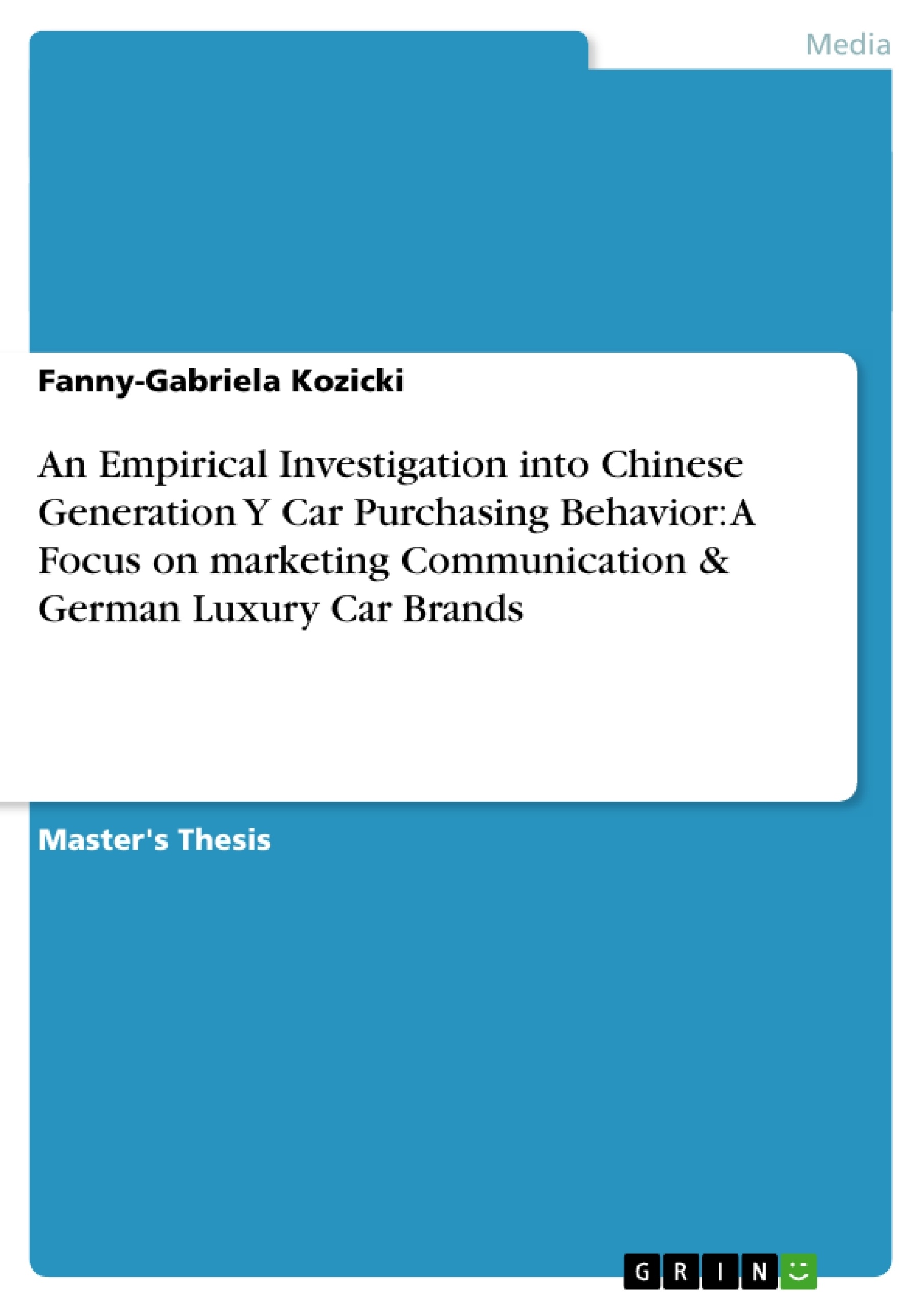In recent years, China’s Automotive Market has grown tremendously and reached the goal to be the worlds biggest. With the increase of automotive competitors, not only from local but also foreign organizations, a car brand needs to understand its audience well in order to apply its marketing communication strategies. In other words, apply the correct messages and related media to communicate with the targeted Chinese consumers successfully.
China has currently 1.3billion individual consumers on the market, out of which over 350 are USD Billionaires and 500 million are below age 30. These two distinctive statistics of the consumer market are specifically pointed out, as they are the key to acknowledging that the consumers in China are changing. Recent studies have shown that the purchasing criteria, decision making process and used communication channels are quite different of the younger consumers than those of the ‘lost generation’ who acquired sudden wealth after the Cultural Revolution. Though, the newly rich, now in their 50’s, are still the main target group of luxury brands in China, a good marketer always has to be able to predict future developments. With the modernization of the Chinese society, the costumers who will inherit the fortunes of the “lost generation” and rise in line with the rise of the countries economy is namely Generation Y.
Who are these successors of the post-revolution newly rich consumers and how do we communicate a product to them successfully?
On the basis of my unquestionable fascination by China’s Automotive Market and German Luxury car brands, I will pursue to answer the above question in order to give an overview for a marketer as to how successfully communicate a car to Chinese Generation Y consumer.
Due to research in this field still being at an embryonic stage I will personally carry out an empirical investigation and outline who this consumer is, how they process information, their usage of mass and personal communication and acknowledge their attitude towards German luxury car brands. Finally, on the basis of the research findings I will define Chinese Generation Y car purchasing behavior and create a marketing communication strategy for a German Luxury car brand in China wishing to engage with the consumer in question.
Inhaltsverzeichnis (Table of Contents)
- Zusammenfassung der Kapitel (Chapter Summaries)
- Schlüsselwörter (Keywords)
Zielsetzung und Themenschwerpunkte (Objectives and Key Themes)
This dissertation investigates the car purchasing behavior of Chinese Generation Y consumers, with a specific focus on marketing communication strategies for German luxury car brands. The study aims to identify the unique characteristics of this consumer segment, understand their information processing habits, and analyze their attitudes towards German luxury vehicles.
- The changing landscape of the Chinese automotive market and its impact on marketing communication
- Understanding the specific needs and preferences of Chinese Generation Y consumers
- Analyzing the effectiveness of various communication channels for reaching this target audience
- Developing a tailored marketing communication strategy for German luxury car brands in China
- Identifying key decision-making factors influencing Generation Y car purchases
Zusammenfassung der Kapitel (Chapter Summaries)
This section provides an overview of the key themes and arguments presented in each chapter of the dissertation.
Schlüsselwörter (Keywords)
The study focuses on the following key concepts: China's Automotive Market, Chinese Consumers, Chinese Generation Y, German Luxury Car Brands, Marketing Communication, Mass and Personal Communication, Decision Making Process, and Strategy.
- Quote paper
- Fanny-Gabriela Kozicki (Author), 2012, An Empirical Investigation into Chinese Generation Y Car Purchasing Behavior: A Focus on marketing Communication & German Luxury Car Brands, Munich, GRIN Verlag, https://www.grin.com/document/190185



